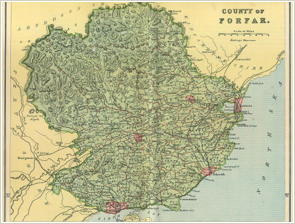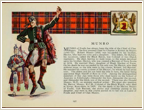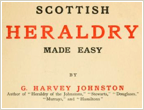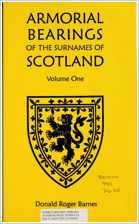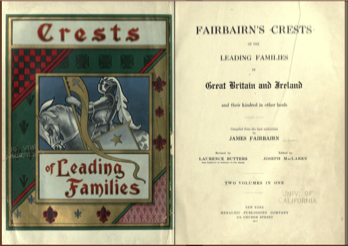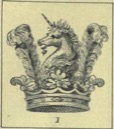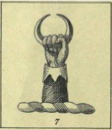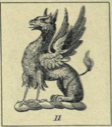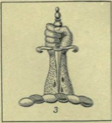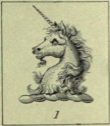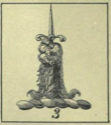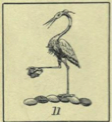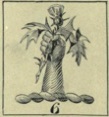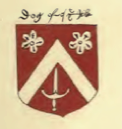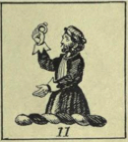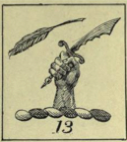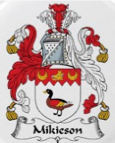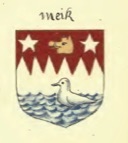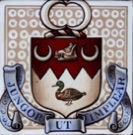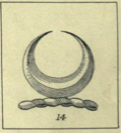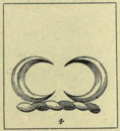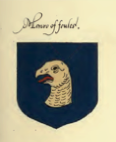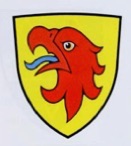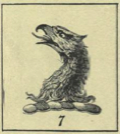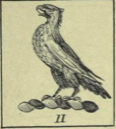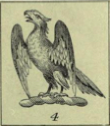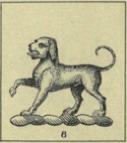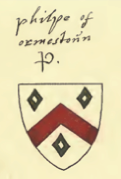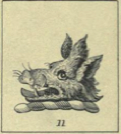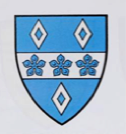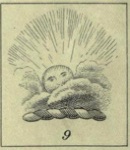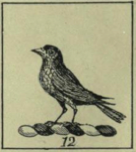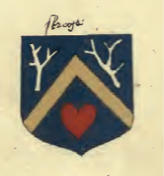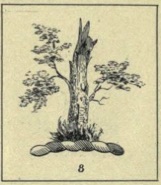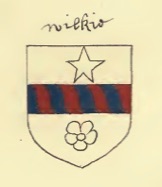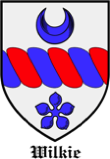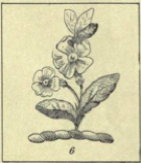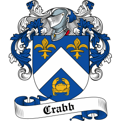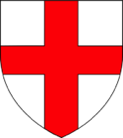Related Coats of Arms
Besides the Raitts, hundreds of other old families had their own Coats of Arms. Some of these that might be of interest to families related to some of the Raitts are briefly described and shown where possible below. Like the Raitt name, there are variations in spelling and some names were used in England as well as Scotland. In general I have only given the Scottish versions of the Coats of Arms, unless there are distinct similarities between the English and Scottish ones, which presumably indicates some degree of relationship. The details have been extracted from the books mentioned on the Raitt Coats of Arms page. The more elaborate modern Coat of Arms below under Munro and Purvis have been taken from the Members Gallery of Scots Arms on The Heraldry Society of Scotland and are included to show how the coats have been designed to incorporate certain familial elements.
What I have also done is to provide details on the origin of the names (some of the information has been extracted, with permission, from the Internet Surnames Database owned by Name Origin Research Limited. Some early bearers of the surname are noted and in addition I show how these diverse families are related to “my” ancestral Raitts through marriage etc (fuller details will be found on the various tree pages). Details on other more distant ancestors and related families are provided on another page.
Abbot
My paternal great grandfather’s older brother, James Dorward Raitt (1840-1917) married Elizabeth Abbot (1843-1940) from Glamis in 1868 in Abroath. They emigrated to America in 1871. Elizabeth’s parents were John Abbot (1812-1878) from Glamis and Bridget Mottley (c1812-1880) from Arbroath.
Thought to be early English, the surname Abbot probably originates from someone who was actually an abbot, i.e. in charge of an abbey. Another derivation is thought to be from a Middle-Eastern word abba meaning father. The surname also occurs in Scotland, where it may also be a variation of MacNab meaning son of the abbot. Abbot/Abbott is recorded in Fife in the 14th century as a sept of clan MacNab; however, the first recorded use of it as a surname appears to be that of Walter Abbot, who is noted in the Danelaw records of Lincolnshire about 1190. Ralph Abbod is recorded in Somerset in 1272 and Walter Abat in Yorkshire in 1219.
Although there are only minor variations in spelling, none of the coats of arms for Abbot are specifically indicated as being Scottish and there seems to be several very different coats. The coat most associated with the name has the blazon of a red field, a gold chevron between three golden pears, however the unicorn prevails in many coats and seems to be that of Baron Colchester of Colchester in Essex.
Abot, Eng. , a unicorn's head, erased, ppr.
Abbot, or Abbott, Iri., in hand a dagger, point downward, dropping blood
Abbot, a fox, passant, ppr., charged on shoulder with a waterbouget, ar. Lahore.
Abbot, a snail, ppr.
Abbot, out of a ducal coronet, a unicorn's head, or, between two ostrich-feathers, ar
Abbot, Lincoln, a unicorn's head, erased, ar. attired and crined, or, (charged with
a bargemelle).
Abbot, out of a ducal coronet, a horse's head.
Abbot, a cubit ann, erect, vested az., cuffed, erm., in hand, ppr., a crescent, ar.
Abbot of Castleacre, Norf., or Aboat, a griffin, sejant, or.
Abbot, Eng., a griffin, sejant, az., bezantee.
The crests for various Abbot families include:
Abbot, erm. on a pale gu. three pears or. Crest: a demi unicorn erm. armed and manned ar. Gorged with a collar, az. studded or.
Abbot, erm. on a bend engr. sa. three cresecents or. Crest: a cubit arm erect, vested az. cuffed erm. holding in the hand ppr. a cresent ar.
Abbott, ar. a cross sa. fimbriated or. betw. four eagles displ. of the second. Crest: A griffin sejeant az. besantee
Crabb
My paternal great grandfather’s oldest brother, John (Dorward) Raitt (1837-1924) married Cecilia Monroe Crabb in 1859. They emigrated to America in 1863. Cecilia (1837-1920) was the daughter of James Crabb (1794-1875) of Arbroath and Cecilia Munro (1804-1859) of Greenock. John’s parents were John Crabb and Elizabeth Raitt who married in 1793. Cecilia’s parents appear to be William Munro and Cecilia Stevenson.
This surname (with variant spellings Crab, Crabb, Crabbe, Krabbe, etc.) of English and Scottish origin is thought to be either a topographical name for someone who lived by a crab tree (though there is the related name of Crabtree), or a nickname for someone whose gait bore some resemblance to that of a crab (crabba or crabbe in Old English)
The first recorded spelling of the family name is that of Walter Crabbe, who is mentioned in the Pipe Rolls of Dorset dated 1188. In 1319 Edward 11 complained to the court of Flanders about the activities of the Engineer John Crabbe in designing engines for the Scots at the siege of Berwick in 1319, and received the reply that he had already been banished for murder. Robert I of Scotland made him large grants of land, and his family were prominent in the affairs of Aberdeen during the succeeding Centuries. John Crab, burgess of Aberdeen, had a charter as early as 1382. Christian Crab married William Hamilton in 1629 in Edinburgh.
John Crab, burgess of Aberdeen, early 1600s - Az. a chev. ar. betw, two fleur-de-lis in chief, and a crab in base or.
John Crabbie, merchant, Leith (1873) - Az. on a fess arg. between two fleurs de lys
in chief and a crab in base or a hunting-horn sa., garnished and stringed of the field.
Crab, (Robslaw, Scotland) - Az. a chev. ar. betw, two fleur-de-lis in chief, and a crab
in base or. Crest, a salmon naissant, ppr
Crab – same arms – Crest, a shield az. charged with a fleur-de-lis or.
Crabb - Az. a chev betw three fleur-de-lis ar. Crest – a lion’s gamb erased, holding
a dagger ppr
Crabb - Az. a chev betw two fleur-de-lis ar in chief, and a crab in base, or
The crests for various Crabb families include:
Crab, Sco., a salmon, naiant, ppr.
Crab, or Crabbe, a shield, az., charged with a fleur-de-lis, or
Crab, or Crabbe, in lion's gamb, erased, a dagger, ppr
Doig
My paternal great grandfather’s younger sister, Elizabeth Dorward Raitt (1849-1924) married William Robertson Doig (1848-1922) from Glamis in 1871 in Arbroath. He was the son of David Doig (c1823-1910) of Kirriemuir and Agnes Robertson (1818-1901) of Glamis. David’s parents were Alexander Doig (1793-1860) and Elizabeth Lundie.
The name is an anglicized form of the Old Scots Gaelic name Mac Gille Doig - a compound of the elements "mac" meaning "son of", "gille", a servant, plus the personal name Doig, a short form of Cadog. The name therefore translates as "son of St. Cadog's servant". In Scotland, the name appears most often on record in places where St. Cadog was commemorated. In the 15th century, the name was spelt Dog, while the spelling Doig appears in the 17th century. Other variants include Doag, Dock, Doeg, Doak, and Doidge and there were Dogs, Dougs, or Doigs of Dunroben, Ballingrew, Coldoch, Cookston, Reswallie, and elsewhere. In South Perthsire at least, Dog/Dock was a sept of clan Drummond whose name was taken from the clan’s earliest land at Drymen near Loch Lomond.
The first recorded spelling of the family name is that of Alexander Doge, vicar of Dunnychtyne (Dunnichen), who is mentioned in the Registrum Episcopatus Brechinensis dated 1372. There is mention of John Dog, armiger, in 1468 and Dene Thomas Dog of Inchmahome in 1478. James Dog was keeper of the King's wardrobe from 1488-98. Alexander Dog was cannon of Inchmahome in Menteith in 1491. At the beginning of the sixteenth century, there was a burgess family in Brechin and John Doig was Provost of Brechin. In 1523, James Dogge, was messenger from the Queen of Scotland, and was afterwards called Jamie Dog, or Captain Dogg. In 1552 James of Dunroben, from Perthshire, was raising men in Menteith for service in France. Thomas Doig held land in Craigmakerone in 1644 (Records at Scon). In 1682, Barbara Doig, daughter of John and Margaret, was christened at Edinburgh parish church, while Walter Doig, son of Henrie and Christian was christened at the same place in 1690. Dr. David Doig (1719-1800), was rector of Stirling Grammar School
Dog of Dunrobein's arms - an addition in ink, with the initials W. D. - A sword in bend sinister between two cinquefoils.
Sir J. Balfour - gules, a chevron argent between two cinquefoils
ermine and a naked sword argent.
Ballingrew - cinquefoils argent, and the sword hilted and pommelled or.
Doeg - gu. a chev. betw. two cinquefoils in chief and sword paleways in base ar. Crest: a hand holding a thistle. Motto: Malo mori quam foedari.
Doeg (Dunrobin, Scotland) - same arms
Doig – same arms as Doeg. Crest: a falcon with wings expanded and inverted, belled, ppr. Motto: Ne cede malis
The crests for various Doig families are:
Doeg, in hand a thistle
Doig, a falcon, wings expanded and inverted, belled, ppr.
Dorward
My paternal great grandfather, David Dorward Raitt (1846-1887) was the son of John Raitt (1805-1880) of Arbroath and Elizabeth Dorward (1808-1888) also from Arbroath. Elizabeth was the daughter of John Dorward (1760-1822) and Margaret Philip (1764-1852) – both from Arbroath. Three of the five children of John Raitt and Elizabeth Dorward (James, David and Elizabeth) had Dorward as a middle name.
The spelling Dorward is said to be an English variant of Durward found chiefly in Scotland. It is also found as Dorwood, Durrad, Dorrat and Durrett. Of Anglo-Saxon origin, it is an occupational name from the Old English term "duru-weard" - door-keeper or porter. In Scotland the office of door-ward to the king was a very honourable one and in the beginning of the 13th century was hereditary in the powerful family of "de Lundin", who emigrated to Aberdeenshire because of a prolonged dispute between the family and Duncan, Earl of Mar, from whom homas de Lundin claimed the earldom through his mother. The dispute, during which the family had the support of the Scottish Kings William the Lion and Alexander II was settled in 1228 and resulted in the de Lundins or Durwards obtaining a lordship in the valley of the Dee. The Duruards, or Dorwards, of Lintrathen derived their name from their office of royal palace doorkeeper. The family erected the now-ruined Castle of Coull, near Aboyne, Aberdeenshire about the middle of the 13th century.
The remote progenitor of the ancient and now extinct house of Doorward, or Duruard, is said to have been "Malcolm de London," an English gentleman, who came to Scotland with King David I., from whom, or from Malcolm IV., he obtained the lands of Lundin, or Lundie, in Angus. The family was designed Lundin of that Ilk until the reign of William the Lion, when Sir Thomas de Lundin obtained the office of Hostiarius, or Doorward to that king, and assumed the surname from his office.
His son, Sir Alan de Duruard who succeeded to the office of Hostiarus following his father’s death and who was the first of the family to assume the name Dorward, “was the most accomplished knight, and the best military leader in Scotland." He married a natural daughter of Alexander II. He held extensive property in the north, and resided chiefly at Coull Castle, Aberdeenshire. He erected a Convent of Dominicans at Montrose in 1230 He died in 1275, and was interred at the Abbey of Coupar-in-Angus. His son Sir Alan Duruard of Coull founded an hospital at Kincardine O'Neil, circa 1296. Allan Duruard of Coull Castle fell in the wars with the Saracens (the Crusades) about 1330-1.
The first recorded spelling of the family name is that of Reiner Dureward, who is mentioned in the Curia Rolls of Norfolk dated 1208. William Doreward was recorded in the Pipe Rolls of Hampshire in 1230 and Richard Doreward was mentioned in the Feet of Fines of Essex in 1255. Dorward, popular as a surname around Arbroath from the 15th century, is probably from the office of door-ward of the Abbey there. Dorward (and its variants) is a sept of the clan Gordon - a Norman family settled under David I in Berwickshire.
Duruards of Lintrathen - Argent, a lion rampant gules, within a double tressure flory, counter-flory, of the second. Crest: A cross pattee, fitchee, or. Motto: This I’ll defend.
There are many different coats of arms (mainly English) for Derward, Durward
and other variations, but a Scottish one is:
Durward (Scotland) – ar. a cross gu.
The crests for various Dorward families are:
Durward, Sco., a demi-man, ppr., vested, gu., holding a gem-ring.
Dorward, Sco., a cross pattee, fitched, ar. This I’ll defend.
Durward, Eng., in dexter hand a scimitar, indented on back, cutting at a pen, all ppr.
Meikison
My paternal great grandfather’s parents were Alexander Raitt and Susan Millar who married in St Vigeans in 1796. Alexander’s parents were John Raitt and Jean Meikison who married in 1763 and about whom not an awful lot is known. However, on a gravestone in Arbroath Abbey erected in memory of Alexander Raitt mention is made of John Miekison, malt man, and his wife Agnis Shakkart. This Alexander (1799-1846), married Mary Stormont, and is the son of Alexander Raitt and Susan Millar and grandson of John Raitt and Jean Meikison.
The original spelling of the name is possibly Mikieson (although there are many variations including Meggison, Miekisone, Miggesone, Michieson). The Laird of Hill in Perthshire applied for a coat of arms in 1693 and was granted nearly the same arms registered about 1680 by Patrick Meik of Ledcarsie also in Perthshire with a shortened version of his motto. This would appear to indicate some degree of relationship between the names Meikison and Meik - indeed, a much earlier filial kinship.
Recorded in the spellings of Meek, Meeke, and the patronymics Meeks and Meekes, this is an Anglo-Scottish surname. It is medieval, and a nickname surname for a gentle or self-effacing person deriving from the pre-7th century word "meek" or the Old Norse "mjukr" meaning "humble" or "meek".
The first recorded spelling of the family name is shown to be that of Richard Mek, mentioned in the Patent Records of the county of Somerset dated 1229. Robert le Meke is recorded in the Register of the Freemen of the City of York in 1300, and Alicia Meke, whose occupation is given as "labourer" is registered in the Poll Tax rolls of Yorkshire for 1379. The surname is recorded in Scotland from the mid 15th century for William Mek of Cowbyr in 1457, whilst Robert Meik was a burgess of the city of Perth in 1545. In 1692, the marriage of John Martin and Jane Meek was recorded in St. Antholin's, London.
Meekison/Michieson is reputed to be from the name MacMichie and a sept of clan MacDonnell of Keppoch. Meek/Meik are from the same name and appear in Fife and Angus in the 15th century and Perthshire in the 16th. The MacDonnells of Keppoch (the spelling changed from MacDonald in the 17th century) were descended from Alistair Currach, third son of John, first Lord of the Isles and hi second wife, sister of King Robert II.
Mikieson of Hill (1693) - Arg. a duck ppr., on a chief indented (dancettee) gu. a boar's head, couped between two crescents or. Crest, a decresent ppr. Motto: Ut implear.
Meik of Leidcassie. - Arg. a duck ppr., on a ref chief dancetty gu. a boar's head couped between two crescents of the first. Crest: an increscent and decrescent respecting and joining one to another. Motto: Jungor ut implear.
Patrick Meik’s arms (1680) were similar to those of other Meiks but without the water in base, and with the boar's head argent. His name and arms are enshrined in a stained glass window in Bendochy (image at top right below taken by Babette Kenyon).
Crests for Mikieson/Meik are:
Mikieson, Sco. , a decrescent, ppr. Ut implear,
Mikieson, Sco., a crescent, ppr. Ut implear.
Meik, Sco., an increscent and decrescent, respecting and joining the one to the other, ppr. Jungor ut implear
Munro
My paternal great grandfather’s oldest brother, John (Dorward) Raitt (1837-1924) married Cecilia Monroe Crabb in 1859. They emigrated to America in 1863. Cecilia (1837-1920) was the daughter of James Crabb (1794-1875) of Arbroath and Cecilia Munro (1804-1859) of Greenock. His parents were John Crabb and Elizabeth Raitt who married in 1793). Her parents appear to be William Munro and Cecilia Stevenson.
Recorded in various spellings including Munro, Munroe, Monro, and Monroe, this famous surname is Scottish. According to the various histories of the clan there is a legend that the original name holders came from Ireland in the 12th century. The surname appears to be Gaelic, and could derive from the name 'Maolruadh'. This translates as 'the red haired tonsured one' from 'maol' meaning bald, and 'ruadh', red or auburn. However in Scotland there is also a different claim that the origin is locational, although still Irish, and a such describes 'a man from the River Roe' in County Derry.
Early examples of the surname recording include Robert de Monroe who had a charter from King Robert I in 1338. He is believed to have been the first registered chief of the clan. Other examples are those of Johannes de Monro, of Foulis, a charter witness of the lands of Usuy in 1463. James Monroe, President of the United States of America in 1823 was descended from Andrew Monroe, who was captured at the battle of Preston in 1648, and subsequently shipped to the colony in Virginia.
The ancient knightly name of Monro is of native Celtic origin, and seems to be of local derivation from Mon-Ross or hill of Ross applied to the hill-men or mountaineers of Ross. Their first name was actually Monross. Robert of Monro had a charter from Robert I (1274-1329)., of Counetis, in Strathspey, and of the lands of Capermakcultis. In 1437 George first has the designation of Foulis. Robert of Foulis sat in parliament from 1560-72.
Monro of Foules - The eagle's head is erased on the seal of Robert Munro, vicar of Urquhart 1579.
Munro, N.S. Bart (Foulis, Rosshire, 1631) - quarterly; first and fourth. Or. an eagle’s head, erased, gu, second and third, Seymour. Crest: an eagle, close, ppr. Supporters, two eagles ppr. Motto: Dread God
Lyon Register, 1672-78, shows that or, an eagle's head erased gules, had at that time become the settled arms of the name. That coat is recorded with differences for several cadets, and for the chief, with two eagles proper as supporters.
Monro of Balkney - vert, an eagle displayed argent armed gules.
Monro of Foulis - gules, a lion's (? eagle's) head erased or; aliter, or, an eagle's head erased gules.
Sir George Monro (of Culrain) - gules, an eagle sitting on a helmet proper
Munro of Foulis - or, an eagle perching on a helmet gules, and adds a bordure embattled of the second for Sir George, who was a younger son.
Munro - or, an eagle’s head, erased, gu. Crowned with a natural coronet ar. – Crest, on a mural coronet ar. an eagle close, or.
Munro (Installed Knight of the Bath, 19 May 1779) – or, an eagle’s head, erased, gu. Crest: an eagle, close, ppr. Motto over it, Dread God. Supporters, dexter, a tiger ppr. Morally gorged and chained or; sinister, an eagle ppr. Naturally gorged or.
Munro, Sir Thomas, Bart (born 30 May 1819, succeeded as second Bart. at the demise of his father in 1827. Creation (then Governor of Madras 6 July 1827) - or, an eagle’s head, erased, gules, encircled by a branch of laurel on the dexter, and of oak on the sinister side, orlewise, vert: on a chief argent. a representation of the Indian hill-fort of Badamy, with the name under it, gold on a canton of the second gu. a representation of the silver medal presented by the East India Company to the first Bart for his services at Seringapatam in 1790, with the name below it. Crest: an eagle, close, ppr having the " Seringapatam " silver medal pendent from its neck by red ribbon, the dexter claw resting on an escutcheon gu. charged with the hill-fort of the first Badamy, gold, as in the arms, and in the beak a sprig of laurel, vert. Motto: Dread God.
Crests for various Monro/Munro families include:
- an eagle's head, erased, pgr. Alis et animo.
- an eagle, perching, .ppr. Time Deum.
- an eagle, looking to the sun in glory, ppr. Coelestia sequor.
- an eagle, perched, or. Non inferiora.
- Bart., an eagle, rising, ppr. Dread God.
- K.B., Sco., an eagle, close, ppr. Dread God. .
- an eagle, rising, with a sword, ppr. Alis et animo. .
- an eagle, wings addorsed, ar.
- an eagle, wings expanded.
- on a mural coronet, ar., an eagle, close, or.
Philip
My paternal great grandfather’s elder sister, Margaret Phillips Raitt (1834-1911), unmarried, was named after her grandmother Margaret Philip (1764-1852) who married John Dorward in 1790 in Arbroath. Margaret’s parents appear to be James Philip and Barbara Spence.
The Scottish surnames Philp or Philip derive from the Ancient Greek name Phillipos (lover of horses) and is almost exclusively from the county of Fifeshire. First introduced into the British Isles by returning crusader soldiers from their expeditions to free the Holy Land in the 11th century, the name was that of one of Christ's twelve apostles as well as Philip of Macedon, the father of Alexander the Great. Spelling variations include Phillip, Phelp, Phelps, Phalp, Phipps and Phelops. The surname Phil(l)ips is also another variation. The name appears in Berwickshire and Lanarkshire in the 13th century and in Aberdeenshire and Fife in the 15th. It is also a variation from MacKillop and is a sept of both MacDonnell of Glengarry and MacDonnell of Keppoch.
It was a used as a Christian name in Lincolnshire in 1142 for Filippus de Crochesbi. As a surname it was first mentioned in 1275 in the Hundred Rolls for the county of Norfolk with William Philp and Henry Philip. The surname is first recorded in Scotland in 1296 with Rauf Phelippe of Berwick. The surname for Philpe of Ormestoun makes its appearance in Fife about the middle of the fifteenth century. Of the family, Stevin was burgess of Edinburgh in 1467 and bailie of Newburgh in 1473. James was curate at Abdie in 1481. John was abbot of Lindores in 1522-66, sat in parliament, and was a lord of Session. In 1564 he granted a charter to his cousin James Philp of Ormiston. William went to Sweden 1624, was ennobled in 1638, and attained the rank of lieutenant-colonel. Henry sold Ormiston about 1630, but the estate was recovered by another branch of the family. Philp, clerk of Newburgh, was grandfather of Mr John of Ormiston, who registered arms about 1685.
Other early bearers include Sir James Philp, curate of Arbroath Abbey in 1467. John Phillips, sailed from London to Virginia aboard the Merchant's Hope in 1635 and was one of the earliest recorded bearers of the name to settle in America.
A Coat of Arms granted to the Phillips family of London in 1634 is silver, a black lion rampant, collared, chained and ducally crowned gold.
Elizabeth Fleming, wife of Archbishop Burnett, was maternally descended from the Philps; the arms ascribed to her in a Funeral Escutcheon seem at first to have been a chevron between three mascles, and to have been altered to a chevron between three talbots' heads couped and charged with as many lozenges. Philp was one of the quarters of the first Countess of Leven, nee Renton,
James Philp of Almericloss, co. Forfar, bailie of Arbroath, was father of James, who registered arms, 1672-78 - azure, a chevron between three talbots' heads couped argent. Motto: Non dormit qui custodit. He married M. Grahame of Duntrune and their arms are sculpted on two shields with their initials, and date, 1674, on their monument in Arbroath Abbey grounds.
His grandson, John, was governor of the Dutch island of St Martin in the West Indies, and is in the Lyon Register styled chief of the name ; his only child, Susanna, married, in 1741, James Wilson, merchant in Glasgow, in 1741 and they sold Almericloss. In 1771, James Wilson of Glanderstoun registered arms, quartering Philp, and with the motto of that family.
John of Ormiston - azure, on a chevron between three talbots' heads erased argent two lozenges of the field.
Philip of Almericloss – Azure, a chevron, between three talbots’ heads erased, argent
Philp - gules, on a chevron argent between two mullets or a boar's head and a mullet of the field.
There are many crests for variations of the name Philip - two that might be relevant are:
Philip, a talbot, ppr. Vivis sperandum
Phillip, Sco., a boar's head, erased, sa.
Purvis
My paternal great grandfather, David Dorward Raitt (1846-1887), married Mary Purvis in 1869 in Arbroath. She was born in 1846 in Arbroath (died 1939), the daughter of Catherine Wilkie (c1813-1887) of Forfar and William Purvis (c1813-1869) of Montrose. William was the son of David Purvis (Montrose) and Elizabeth Souter (StVigeans). Catherine was the daughter of John Wilkie and Isabella Wallace who married in 1808. Before she married William Purvis, Catherine was in a relationship with William Kinnear (1805-1859) from Dunnichen.
The surname is of early medieval origin and is found particularly in the northern counties of England and in Scotland - it was prevalent in the 13th century in Berwickshire. It is from the occupational name for the appointed official who was responsible for obtaining the supplies needed for a monastery or manor house, a 'purveyor'. The derivation is from the Middle English word 'purveys' meaning 'provisions', 'supplies', from Old French 'porveoir', to provide, supply. The ultimate derivation is from the Latin 'providence', to foresee, anticipate. The surname has a number of variant forms: Pourves, Purvis, Purves, Purvess and Purvey. The first recorded spelling of the family name is that of William Purveys who is mentioned in The Book of St. Mary's, Melrose, dated about 1214.
Purves, N.S. Bart (of that Ilk, Berwickshire, 1655; New Register) - Az. on a fesse, betw. three mascles, ar. as many cinquefoils of the first. Crest, the sun, rising out of a cloud, ppr. Supporters, two lynxes ppr. Motto: Clarior e tenebris.
Purvis, (Darsham, Suffolk. Granted May 1779) - Az. on a fesse, betw. three mascles, ar. as many cinquefoils of the first. Crest, the sun, breaking from behind a cloud, ppr. Over it this motto: Clarior e tenebris.
Purves (Scotland, Pont’s MS) - Ar. on a fesse az. betw. three mascles gu. as many cinquefoils of the first.
Pourves - This coat, the tinctures being altered, was allowed to Sir William Purves, who was created a baronet 1665. The seal of William Purves of Mospennoch, co. Peebles, c. 1230, has a hunting-horn.
Purves of that Ilk (1st matric. 1673, 2nd do. 1772) - Az. on a fess between three mascles arg. as many cinquefoils of the first.
Purvis - Az. on a chev. betw. three mascles, ar, as many cinquefoils of the first. (Another, gu). Crest, as the last; over it a scroll, inscribed Post nubile Phaebus
Purvis of Kinaldy (1868) - Az. on a chevron arg. between three mascles or as many cinquefoils vert.
Sir William Purves Hume Campbell of Marchmont and Purves (1813) - Az. on a fess between three mascles arg. as many cinquefoils of the first (3rd quarter for Purves of that Ilk); over all on an escutcheon arg. an orange crowned and slipped ppr.
Crests for various Purvis families include:
Purves, Sco, the sun issuing from a cloud, ppr. Clarior e tenebris.
Purvis, Lieut. Col. Charles, of Darsham, Suff. , same crest and motto.
Purvis, Sco., the sun issuing from a cloud, ppr. Post nubila Phaebus.
Sangster
My paternal grandfather, William Raitt (1871-1928), married Helen Scorgie in 1899 in Arbroath. She was born in St. Vigeans in 1877 (died 1966), the daughter of Alexander Scorgie (1848-1924) of Easter Bonnyton, Banffshire and Ann Robert Smith (1846-1929) whose parents came from Kincardineshire. Alexander was the son of Alexander Scorgie and Isabella Kelman (married 1843) and the grandson of James Scorgie and Isabella Sangster (married 1820 in Gamrie, Banffshire). Her parents were Alexander Sangster (1747-c1840) and Margaret Robertson (1762-c1851).
Sangster is either an occupational name deriving from the office of singer or chorister in the church, or a nickname for a person who was always singing (Old English sangere or songere meaning singer). In this latter capacity they were perhaps travelling minstrels. As such they may have been little more than beggars for a series of statutes were enacted by the Parliaments of Scotland, as early as 1445, to restrain wandering vagabonds, masterful beggars, idlers, Egyptians and seers and others shunning work and without gainful means of employment or who could give no reckoning of how they lawfully got their living - but who were otherwise fit, strong and able to work. The list of these idle persons included “all sangsters”!
The first recorded spelling of the family name is shown to be that of John le Songere, who is noted in the Middle English Occupational Terms dated 1296. Thomas le Sanggere is mentioned in The Subsidy Rolls of Somersetshire in 1327 while John le Sangere is recorded in The Subsidy Rolls of Essex in the same year. Variations in the idiom of the spelling include Songer, Sangar, Sangster, etc. Abraham Sanger married Mary Dodd in 1617 in London and their son John was christened there in August. Judy Sangar, aged nineteen, a famine emigrant, sailed from Liverpool to New York aboard the Metoka in 1846.
Sangster - Ar. a chev. sa. betw. three blackbirds ppr. Crest: on a rock a blackbird ppr.
Sangster, or Songster (Scotland) – Ar. a chev. gu. betw. three blackbirds sa. Crest: a blackbird ppr. Motto: Providentia divina
Scorgie
My paternal grandfather, William Raitt (1871-1928), married Helen Scorgie in 1899 in Arbroath. She was born in St. Vigeans in 1877 (died 1966), the daughter of Alexander Scorgie (1848-1924) of Easter Bonnyton, Banffshire and Ann Robert Smith (1846-1929) whose parents came from Kincardineshire. Alexander was the son of Alexander Scorgie (1820-1906) and Isabella Kelman (1826-1913) who married in 1843 in Rothiemay, Banffshire.
The name Scorgie is rather unusual and appears not to be found in any of the very early registers - although it does date from the 17th century in Aberdeenshire. However, the name Scrogie has existed in Aberdeenshire since the 16th century and in Perthshire since the 15th and this makes me wonder whether over the centuries the name changed (as they do) from Scrogie to Scorgie either through mistakes or differences in pronunciations and/or spelling. The name Scrogie appears to derive from scroug or scrog meaning a branch without leaves.
Robert de Scrogges having lost his life in the service of David de Line, the latter granted, about 1200, to his son, Simon de Scrogges, a charter of his lands of Scrogges in Lyne, county Peebles, which was confirmed before 1213 by Robert de Line, son of David. Soon after Simon, with consent of his brothers William and Hucting, sold Scrogges to the Bishop of Glasgow. In 1296 Adam del Skrogges, burgess of Haddington, and William del Skrogges of Peeblesshire swore fealty to Edward I. David de Scrogges in 1413 owned land in Aberdeen; John of Scrogis or Skrogs, elder, burgess of Aberdeen 1440-50; John, probably his son, sat in parliament for the burgh in 1445, and was provost; William Scrogs was vicar of Nig in 1453. Bishop Scroge was son of Alexander, minister of Old Machar, who died 1659, at a great age.
Scroge; Bishop 1673 - These arms were registered by William Scrogie, Bishop of Argyle, 1666-75, with the heart argent.
William Scrougie, commissary of Argyle, lineal representer of Scrougie of Inveri - or, a chevron azure between two scrougs (or branches wanting leaves) in chief and a man's heart in base proper. Crest: the trunk of an oak tree, sprouting out branches and leaves, ppr. Motto: Ero quod eram.
Scrogie (Scotland, New Register) - Or, a chev. az. betw. two scrogs in chief, and a man’s heart in base, ppr. Crest: the trunk of an oak tree, sprouting out branches and leaves, ppr. Motto: Ero quod eram.
Scrogie or Scroggie - Az. a chev. or, betw two scorgs in chief, and a man’s heart in base, ar.
Scroggie - Azure, a chevron between two branches in chief and a crescent in base argent; in middle chief a mullet or.
Scroggy (Scotland) - Ar. a chev. gu. betw. two mullets in chief, and a crescent in base, az.
The crest for Scrogie is:
Scrogie, Sco., trunk of oak-tree, sprouting leaves and branches, ppr. Ero quod eram.
Wilkie
My paternal great grandfather, David Dorward Raitt (1846-1887), married Mary Purvis in 1869 in Arbroath. She was born in 1846 in Abroath (died 1939), the daughter of Catherine Wilkie (c1813-1887) of Forfar and William Purvis (c1813-1869) of Montrose. William was the son of David Purvis (Montrose) and Elizabeth Souter (StVigeans). Catherine was the daughter of John Wilkie (born about 1786) and Isabella Wallace (1787-1868) who married in Stirling in 1808. John was in the Forfar Militia, later in the Honourable East India Company, and was stationed on St Helena when Napoleon was exiled there. Two of his children (William and James) were born there.
The surname Wilkie (with Willie and Willockie (little Willie) being synonymous) is a distinctively Scottish diminutive of the given name William, itself coming from "Wilhelm", the Norman form of an Old French personal name from Germanic origin. Introduced into England by the Normans at the time of the Conquest in 1066, William became the most popular given name in England and generated a wide variety of diminutive and pet forms including: Will, Wilkin, Wilkes, Willet and Willmot.
The name is found in Midlothian in the 14th century and is held to be (like Wilkinson in Lanarkshire in the 15th century) from the name MacQuilkan found in Kintyre in the 16th century – a sept of clan MacDonald.
The first recorded spelling of the family name is shown to be that of David Wilkie, who witnessed a notorial instrument, dated 1495, in the Records of Pitcairn, Fifeshire, although a family of the surname Wilkie was seated at Rathobyres in Midlothian from the beginning of the 14th century. William Wilkie was a member of an Assize in Edinburgh in 1529, and Catherine Wilkie was recorded in Dysart, Fifeshire, c1541. James Wilkie was a tenant of Newbattle Abbey in 1563, and in 1591 the accounts of the ballies of the burgh of Lanark were rendered to the Exchequer by William Wilkie, burgess there at that time. Sir David Wilkie (1785 - 1841), was appointed painter in ordinary in 1830, retaining the office under William 1V and Victoria.
A Coat of Arms granted to the Wilkie family is a silver shield, with a fess wreathed azure and red, between a crescent in chief and a cinquefoil in base of the second.
Wilkie (Scotland, Workman’s MS) – Ar. a fesse, wreathed az. and gu. betw. a crescent in chief, and a cinquefoil in base, of the second.
Wilkie of Newbarns - Argent, a fesse, bendy of seven, azure and gules, between two crescents, in chief, of the third, and a cinquefoil, in base, of the second. Crest: An eagle displayed, proper, charged on the breast with a cinquefoil, azure. Motto: Semper pro amico (Always for a friend.) Major James Wilkie of Newbarns, near Forfar, Angus, succeeded his father, Robert Wilkie, Esq. of Newbarns (1758-1837).
Wilkie (St Vincent, Granted 15 Sept 1770) - quarterly or and ar. , wreathed az. and gu.; in the first and fourth quarters, a camel’s head, couped, sa. bridled of the fourth; in the second quarter a cescent, and in the third quarter a cinquefoil, both of the last. Crest: a demi negro, wreathed about the temples or, and gu. girt round the waist vert, ear-rings pendent ar.; in the dexter hand a bill, in the sinister a sugar-cane, couped; all ppr. Motto: Favente Deo.
A crest for the English family of Wilkie is a primrose, ppr.
